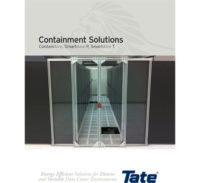containment systems are transitioning from traditional ash-handling systems to more environmentally sound alternatives. This movement has created an opportunity for refractory solution providers to help with the transition, demolition, and installation of the updated ash-handling system.
Awareness of Containment Failures: Power Plants Took Notice
About 10 years ago, power plants, specifically power plants that use coal, took notice of the risk of containment failure and started making ash system changes. In 2008, a containment failure in the ash pond of a power plant in the southeast U.S. released 1.1 billion gallons of coal fly ash slurry into 300 acres of the land surrounding the pond. The slurry ended up flowing into several local rivers. Cleanup from this devastating failure cost approximately $1.1 billion and eventually the lives of more than 30 people who participated in the cleanup effort. This incident, as well as other economic factors, have resulted in the transition to better ash-handling systems. These better systems eliminate the need for ash slurry ponds.
The transition to better systems has created an opportunity for experienced refractory solution providers. Specifically, each new slurry system is fed by multiple boilers that need to be adjusted, ash hoppers that need to be relined with new refractories, and the demolition and installation of key refractory system components must accommodate the upgraded system.
Wet Ash Hopper System
One of the two systems that have been designed to handle ash without a slurry pond is the wet ash hopper system. This type of system has been used for decades and offers more environmentally sound practices than slurry ponds.
The wet system dries out the ash as it moves to the ash containment building or a dump truck for removal. This process involves four steps:
- The ash falls through a transition chute into a water-filled ash hopper from super heater and economizer tubes.
- When the ash hits the water, it is shattered from thermal shock.
- The ash then settles to the bottom of the ash hopper and into its submerged scraper.
- With the scraper, the ash is transported by conveyor up an incline, where dewatering takes place. A final water content of 15%-20% is the norm.
There are several advantages to this system:
- Less water is required.
- Less energy is required to move the ash.
- Water treatment is reduced.
- The dewatered ash can be transported more easily and quickly.
Another advantage of the wet ash hopper system is the retractable ash hopper, which can be detached and rolled away from the boiler on a rail system. This allows easy access to the interior of the boiler (economizer and super heater tubes) from the floor. It also creates a much sturdier base for repairs and better preserves the life of the refractory.
Dry Ash Hopper System
An alternative system is the dry ash hopper system. Like the wet system, the dry system is lined with refractory and is attached to the bottom of the boiler with an airtight seal at the top of the hopper. There are three steps:
- The fly ash drops from the boiler into the bottom of the dry hopper.
- The ash is then cooled by ambient air and the negative pressure created by the system.
- The negative air pressure also activates a reburn process in the ash and leads to total combustion of the ash.
As a bonus, the ash reburn process also creates greater thermal efficiency within the boiler. Advantages of the dry ash hopper system over the current slurry pond system include these:
- the lack of water required for processing the ash;
- the absence of chemical treatments for the ash-infused water; and
- reduction of energy that is required to move the ash slurry.
Dry ash hoppers, like those in wet ash systems, can optionally include a retractable bottom to expose the boiler. This has advantages similar to those for the wet hopper system: easy access to the interior of the boiler, a sturdier base for repairs, and preservation of refractory life.
Another appealing advantage is the monetization of the fly ash. Changes in the cement and concrete industry have now created a market for low-sulphur coal, which is found in fly ash.
Refractory Experience Rules the Day
Power plants rely on experienced refractory solutions providers for the success of both types of ash hopper systems. Conversion to either system requires downtime and is considered a capital project costing $8 million to $12 million, depending on size and control modifications. Only a professional refractory company with access to the correct specialty equipment, pump operators, and nozzlemen, coupled with strong and abrasion-resistant refractory material, will be able to handle the scope of the job and time pressures.
Regardless of the hopper system chosen, five distinct services must be completed:
1. Demolition. The demolition of the existing refractory can be performed via cut or flame/torch.
Cut: A hole large enough to accommodate an automatic tear-out machine is cut into the side of the system. Depending on hopper style, this may be difficult, especially if the ash hopper is of a cricket design. This process works best on straight vertical side halls.
Flame/Torch: Using a torch, vertical windows are cut on the outside of the steel hopper for access to the inside. The refractory is then broken into large chunks and removed. The refractory can be broken from the inside to remove the refractory with anchors attached to the steel casing. An automated tear-out machine could also be used to break the refractory from the outside after the steel casing has been removed.
2. Anchor Installation. The anchor installation is performed after the new steel ash hopper has been installed and tested under pressure. Standard V-style stainless steel anchors, generally 5/16-inch in diameter and 8 inches in length for a 9-inch refractory lining are used. The anchors are welded on 9- or 12-inch centers, depending on engineering specifications. The anchors are welded on with a stainless-steel rod. The rod of choice is usually 309L.
3. Mastic Installation. Some power plants will require a mastic coating with thickness of 6-8 mils, which is sprayed over the bare metal and anchors before refractory installation. The mastic is a protective coating for the metal and also acts as an expansion joint for the anchors and the refractory.
4. Refractory Installation. The refractory is installed using a shotcrete or Pli-Shot™ system that is designed for high-volume refractory installation (two or three truckloads of material per shift). Refractory material is shipped in bulk bags, usually 1,250-3,000 pounds in weight. The material is dropped into a hopper and mixed in a high-volume mixer and then unloaded into a pump that sends it through a hose to a nozzle for installation.
Typically, walls of an ash hopper will require 9- to 10-inch thickness of refractory material. Successful application requires expertise but also careful selection of materials, which need to be strong, with a high hot MOR number and a low abrasion loss number. In some applications, ¾-inch stainless steel needles may need to be added to the refractory mixture for strength and more effective drying.
5. Refractory Dry-Out. As an important last step of the process, refractory material must be properly dried to achieve designed strength and to ensure that when the boiler goes online all the free water will be driven out of the refractories. Required dry-out specifications, controlled or other, will vary by refractory manufacturer. In some cases, refractory contractors will enable dry-out by using a steel frame fabricated out of 2-inch angle iron and sheets of expanded metal. The metal is used to make a shelf to place 3-inch mineral wool sheets at the bottom and top of the ash hopper. Mineral wool is an effective thermal insulating material up to 1,000°F; above 1,000°F, a ceramic fiber blanket is a good option.
Refractories, the Last Critical Process
Refractory dry-out is the last step before bringing the system back online. In a transition process that may cost $8 million to $12 million and require significant downtime, the five distinct refractory services take place at the end of the transition, and thus there is a lot of pressure to complete the job on time or even earlier. It is here that an experienced refractory solutions provider can deliver value by providing expert project managers who can expedite schedules, confirm specialty equipment availability, and lead an experienced demolition and installation workforce.
Power plants that use slurry containment systems are transitioning from traditional ash-handling systems to more environmentally sound systems. This has created an opportunity for experienced refractory solution providers to help with the transition, demolition, and installation of the updated ash-handling system. Success requires the selection of a refractory company with knowledge and genuine experience, including personnel who are capable of installing strong and abrasion-resistant refractory materials. To ensure minimal downtime, it is necessary to clearly communicate time pressures to your project manager and ask what can be done to optimize the process. This will help ensure a power plant is back online quickly.



